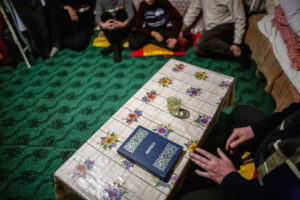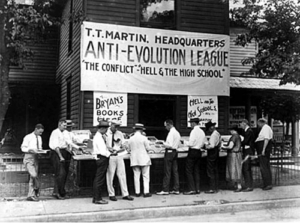
WASHINGTON (BP)–American children are becoming victims of human sex trafficking, according to statistics released by Shared Hope International.
“The figures we use say between 100,000 and 300,000 American children are at risk of trafficking,” said Karrie Delaney, director of communications for the Vancouver, Wash.-based organization that seeks not only to prevent sex trafficking but to rescue and restore women and children trapped in it.
“At least 100,000 American children are trafficked each year,” Delaney said.
Based on these numbers, domestic minor sex trafficking (DMST) has become a serious problem in many locations across the United States. A fact sheet on the Shared Hope International (SHI) website reports age 12 as the average age of entry into illegal pornography and prostitution.
How are young girls lured into the trafficking business?
“Luring happens in a variety of ways,” Delaney told Baptist Press. “In interviews with victims, we have had reports of girls being lured at 12 years old by a pimp or a trafficker by him approaching them at a mall or on the street. He is usually an older boy and buys her presents, making her believe he’s her boyfriend.
“One girl got in the car with [a pimp] because she thought he was her boyfriend, and he drove her to another city, became violent and forced her into prostitution.”
According to the SHI website, pimps can earn up to $632,000 per year by selling four young woman or children. Seventy-five percent of minors engaged in prostitution have a pimp, and most pimps have more than one minor working for them.
Many of these girls are taken off the street. The SHI website says a third of the 2.8 million children living on the streets are lured into prostitution within 48 hours of leaving home.
Since trafficking is such a hidden crime, however, it is difficult to manage an accurate count of how many girls are lured each year. Many girls do not realize they are being lured until it is too late, Delaney said.
Demand is a major cause of the rising trafficking business, Delaney and an awareness video on the SHI website point out.
“As long as there is a demand that fuels this market, there will be a supply,” Delaney said. “We feel that since there is a growing demand, it is going to be a problem that grows as well. Across the United States, there is a culture of tolerance in the media really sexualizing children and making sex scenes the norm. Men often feel very entitled to buy sex.”
Trafficking is not booming merely because of the illegal sex market but also with the help of the legal market and men who feel the need to buy sex.
“There is really no safe way of participating in the commercial sex industry,” Delaney said. “[T]he legal market is really just a fine line between that and the illegal market that exploits children.”
Statistics about the extent of the problem that may be surprising:
— The sale of child pornography is a $3 billion annual industry in the U.S.
— 55 percent of child pornography on the Internet comes from the U.S.
— One in five pornographic images on the Internet is of a child.
— One in five American youth who regularly use the Internet has been sexually solicited.
Despite such statistics, Christians can find ways to help prevent the trafficking industry from destroying more young American lives, Delaney said.
One way is to help make a nationwide change in the way Americans view these exploited children.
“Once someone is labeled a prostitute, in many cases, the way people view them changes,” Delaney said. “In many cases, these girls are arrested and punished for the crime that is being committed against them.”
In fact, 66 percent of minors arrested for prostitution in Las Vegas from 2004 to 2006 had been victims of sexual assault and familial molestation, the SHI website says.
“In the way of awareness in the Christian world, it is really going to start with changing our language first,” Delaney said. “If communities can come together and provide appropriate resources and work with these kids when they are identified, the community can have the knowledge to know these children are being exploited and make future change.”
Delaney suggested looking into foster-care families who have rooms to offer to children living on the streets and in abusive environments. By giving them a supportive and loving home, it moves them out of high-risk situations. With or without a room to offer these girls, spreading the awareness of this issue helps too.
“The more people that know, the more they are going to be able to take action that makes a difference in the lives of these children,” Delaney said.
The website, www.sharedhope.org, also details the countries SHI has identified as in need of special examination, awareness and assistance. The United States is one of those countries.
With funding by the Department of Justice, SHI is conducting field assessments in 10 U.S. locations to identify DMST victims and the services available to these victims. The 10 sites are: Baton Rouge, La.; Buffalo, N.Y.; Clearwater, Fla.; Dallas; Fort Worth, Texas; Independence, Mo.; Las Vegas; Salt Lake City; San Antonio; and the Commonwealth of the Northern Mariana Islands.
–30–
Katherine Kipp is an intern with the Washington bureau of Baptist Press.














